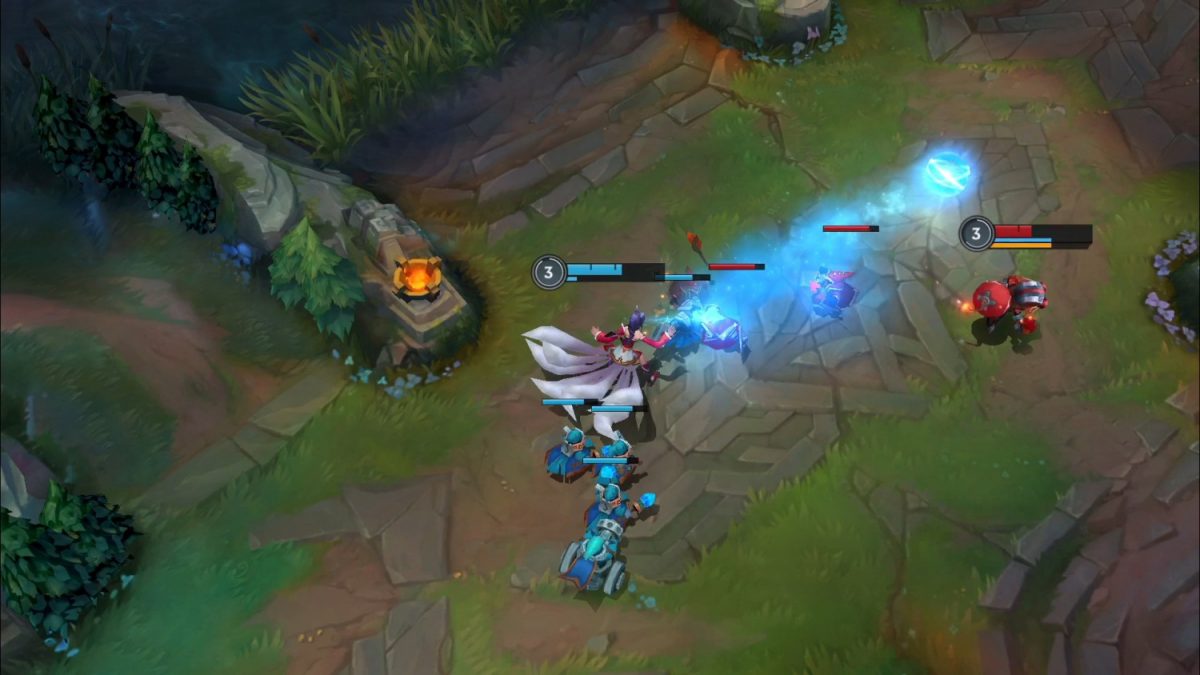Mobile MOBAs are arguably even larger than traditional PC ones these days, especially in Southeast Asia. The 10th anniversary of Riot Games’ League of Legends revealed the company’s plans to expand its player and fan base by jumping onto the card game scene with Legends of Runeterra, and similarly on mobile gaming with League of Legends: Wild Rift.
This is a bold new move from Riot, but one that many would say is an inevitability. We are living in an age where smartphones are just as powerful, if not more, than computers of five years ago. The rise of mobile games as an esport is reflected not just in games like Fortnite, PUBG or, more aptly, Mobile Legends, it is also reflected in technical marvels, such as the likes of the Asus ROG Phone II, being the weapon of choice for pro mobile gamers.
As such, Wild Rift is the end product, after years of clamouring by LoL stalwarts. Featuring the classic 5v5 gameplay in a modified version of the iconic Summoner’s Rift, with a 40-strong roster of champions (and counting), both recent and old. From playing a few matches of it on iOS, we’ve found it to be quite a familiar-but-ultimately-awesome experience.

While at first glance, one could simply label it as a mobile/console port of the base game, the devs actually built this engine from the ground up. This is especially since the controls for console and mobile are more similar to that of the PC, going for a responsive, dual-stick control scheme, which, quite frankly, feels quite seamless.
Rudimentary controls such as moving your champion around are buttery-smooth, with very little to no input delay. Targeting, for the most part, is pretty intuitive, with one touch letting you attack the unit with the lowest health, with nearby enemy champions as the priority. Manual targeting may feel slightly weird initially and may take some getting used to, as you’ll need to hold and drag the Attack or ability button and move it to the particular target you want to strike. As such, champions such as Ezreal, Jinx and Blitzcrank, which require you to pull of some skillshots, need a little more time to be (re)learned, due to the different control layout.
Conversely, if you just want to spin to win as Garen, you’re ensured of a breezy affair.

Button inputs, such as the various champion abilities, are also quite straightforward, though the buttons for Summoner spells (Ignite, Flash etc) are situated slightly further away from the ability buttons, which can be hard to reach, especially at critical moments.. We’ve found that having to reach for them in time can make the difference between winning and losing teamfights, and sometimes that may be quite frustrating.
If you’re coming to Wild Rift with prior LoL experience, it may feel awkward having to fiddle around with the different layout at first. But once you’ve spent a good few minutes on it, you’ll soon start relishing the prospect of scoring pentakills in the comfort of your mobile device. With a little bit of practice, of course.
Another radical change is the usage of wards. In the original game, you’d need to manually purchase them, and you could place them wherever you please. In Wild Rift, however, wards automatically spawn in certain areas of the map, and you’d need to stand over them for a set amount of time in order to claim them for yourself. While not immediately important to more casual players, this is potentially quite game-changing for competitive players especially, as your visual aids are limited to these particular areas of Summoner’s Rift, and they’re almost all in brush areas. If you want to ward, say, Baron Nashor or the Dragon, you’d need the assistance of the likes of Teemo’s mushrooms, or Nidalee’s traps.
This is by design, as not having to buy wards also frees up your gold expenditure, enabling all players to quickly purchase their equipment, and complete their particular build much quicker. As Wild Rift is meant to last even shorter than base LoL, you’re going to need to be strong as quickly as possible.
Other than that, gameplay in Wild Rift is amazingly very similar to the base game. In our two matches of playing it with other testers, we were quickly thinking up champion compositions and strategies on the spot, and communicating as if we were playing it on PC. Again, the main challenge lay in our ability to adapt to the dual-stick controls, but that didn’t take long. Within minutes, it felt just like a typical game of LoL, only slightly more… wild (heh), with the streamlined gameplay.
What Wild Rift has that traditional LoL doesn’t is the addition of the ability to view champions up close.
In the game’s gallery, you can view each individual champion, who’ll play a cool-looking animation that befits their character (which can change depending on what skin you slap on them), after which you’ll be able to simply admire them by rotating them around on your screen. This was one aspect that base LoL should have gotten, but is still a pleasant addition to Wild Rift, regardless.

In any case, League of Legends: Wild Rift looks and plays pretty good. As a former avid player of the original game, it felt like coming back to an old friend for me. If you’re reading this and are also a prospective returning player, but cannot commit to the demands of playing in front of a PC or laptop, Wild Rift may yet scratch that itch for you, and scratch it well.
League of Legends: Wild Rift has no launch date as of yet, and will be available on iOS, Android and console (which exactly is also yet to be determined). Riot plans to announce more details and features sometime in Q1 2020.
Marion has a serious RPG addiction. Sometimes it bleeds into real life; he forgets to sleep because he thinks he has a Witcher’s body clock. Forgive him in advance if he suddenly blurts out terms such as “Mind Flayer” and “Magic Missile”, because never once does he stop thinking about his next Dungeons & Dragons game.




















